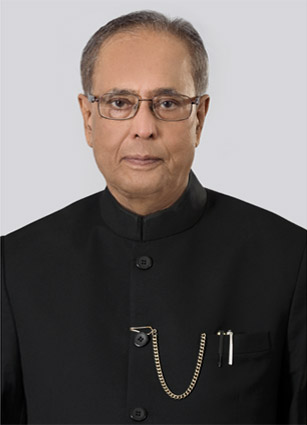 By Ritu Raj Subedi–
By Ritu Raj Subedi–
Despite oodles of diplomatic platitudes heaped on Indian President Pranab Mukherjee’s visit to Nepal to boost Nepal-India relations, the Indian president in fact cut no ice with the critical masses in Nepal.
There was a modest expectation that India will mellow its rigid position on Nepal’s constitution and show some sign of compunction regarding the inhuman blockade it imposed on the Nepalese – hard on the heels of the earthquake last year. The Indian president failed to heal these wounds much to the chagrin of the Nepalese people. He had cautiously parried the reference of embargo when journalists asked him to comment on it.
Irked by Nepal’s decision to promulgate the new constitution in defiance of India’s instruction, the southern neighbor placed an unofficial blockade on Nepal, largely owing to its vested geopolitical interest. It egged on Madhesi parties to intensify agitation at Nepal-India border points as a subterfuge to dodge the international criticisms of the illegitimate sanction.
However, India was compelled to lift the blockade following national and international uproar.
India has refused to welcome the new charter endorsed by over 90 percent of the members of the elected Constituent Assembly (CA). It had only just “notified” the promulgation of the statute after a large number of nations had welcomed it.
This interventionist posture has become a thorn in the Nepal-India relations and it continues to prick the Nepalese.
The ceremonial head of India reiterated India’s previous stance on the constitution and suggested that the parties bring the agitating Madhesi parties on board.
However, the main opposition, the Communist Party of Nepal Unified Marxist-Leninist (CPN-UML), had taken umbrage at Mukherjee’s unsolicited advice. The UML senior leader and former prime minister Jhala Nath Khanal said that Mukherjee’s “pontification” amounted to interference in the internal affairs of Nepal. Khanal has even lashed out at the CPN-Maoist Centre-led government for leaking sensitive domestic issues to the Indian president.
Pushing the substantial bilateral topics into the background, the Indian president invoked his usual rhetoric. He said that Nepal and India share an open border and cultural bonds that make their relationship “special.” He argued that Nepal-India ties cannot be compared with any other nation. These diplomatic hyperboles, some experts argue, are aimed at dampening Nepal’sgrowing engagement with its northern neighbor, China.
Last year, Nepal and China had witnessed significant developments in the history of their bilateral ties. The previous KP Sharma Oli-led government signed landmark agreements surrounding trade and transit with China. The deal has been considered to be a milestone in reducing Nepal’s dependency on India. But, the Prachanda-led government failed to sustain this momentum.The government ran the gauntlet for the cancelation of Chinese President Xi Jinping’s visit to Nepal. Xi was expected to visit Nepal in the course of attending the BRICS summit last month. If he had come to Nepal, the two nations would have agreed on important deals worth billions of dollar – as has happened in Bangladesh. This would give a big boost to Nepal’s economic development.
Instead, a ceremonial Indian president visited Nepal. His visit did not bring much cheer to the Nepalese still haunted by the bad memories of last year’s undeclared blockade. Many people flew into a rage when the government announced a public holiday on the day of Mukherjee’s arrival. There was no reason for taking this decision. Worse, they faced a curfew-like situation in Kathmandu during his stay there. The traffic was brought to a screeching halt. The people were not even allowed to walk on the roadside. This hindered the supply of services and goods in some places. The people expressed their fury by launching a hash tag campaign named #lampasarbad (surrenderism) through social networking sites, mocking the government’s handling of his visit.
On the positive side, Mukherjee’s visit opened the channel of communications at the highest level after the bilateral ties between the two nations reached rock bottom over the country’s constitution. The two-way communication is the key to building confidence with each other. The Nepalese side had left no stone unturned in welcoming its high profile guest. Nepal’s President Bidya Bhandari went to the airport to receive and see off him. It is a rare honor bestowed on the Indian president. Will India reciprocate Nepal’s president in a similar manner when she will land in India? We have to wait for a few weeks to get the answer to this question.
(Subedi is an associate editor of Kathmandu-based state-owned newspaper The Rising Nepal. This article was originally published on November 12, 2016 on www.china.org.cn )

